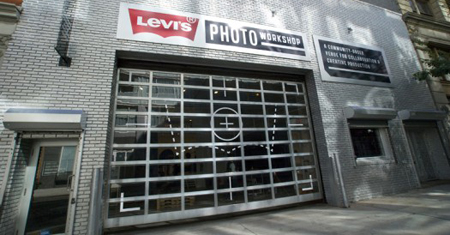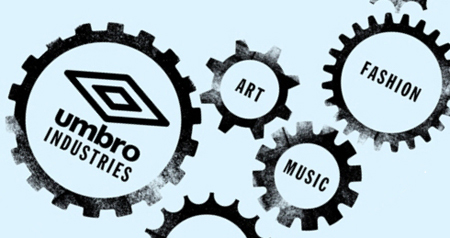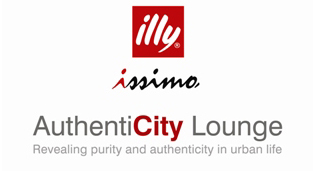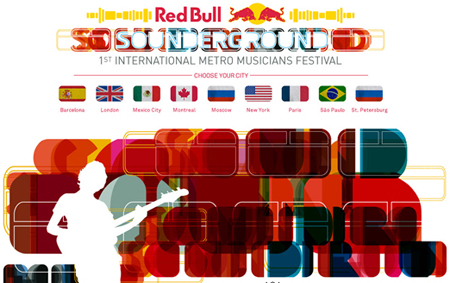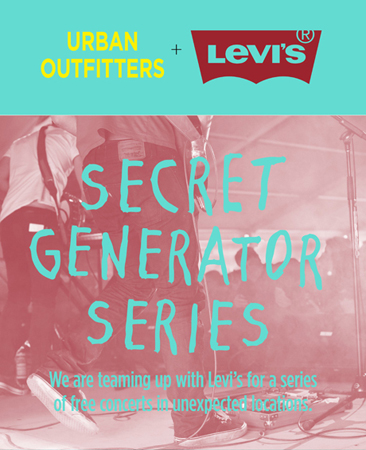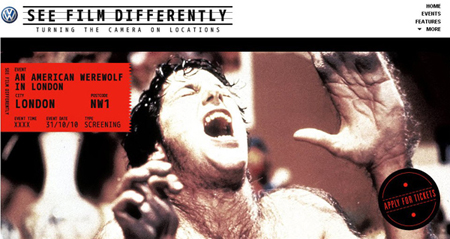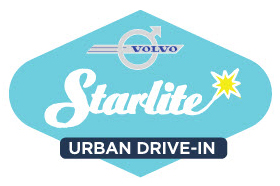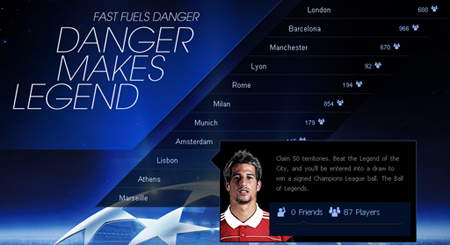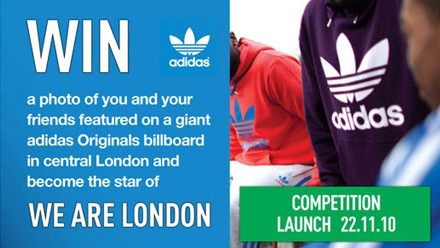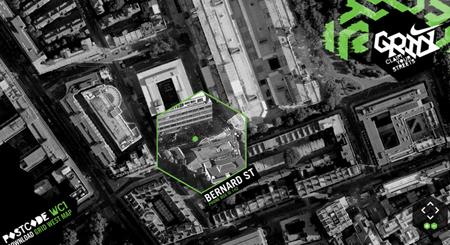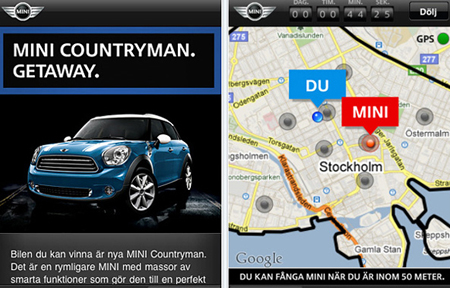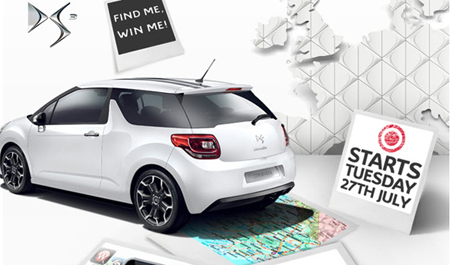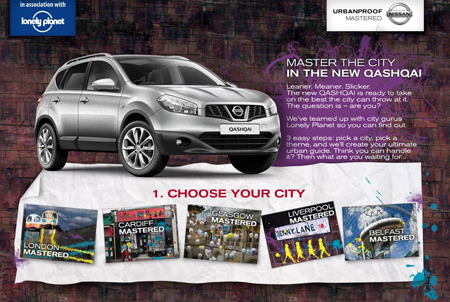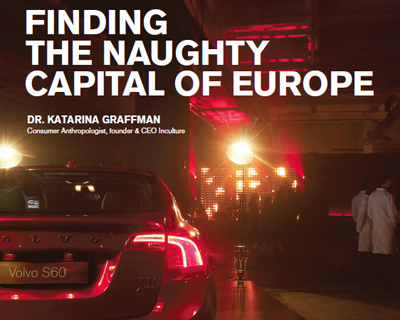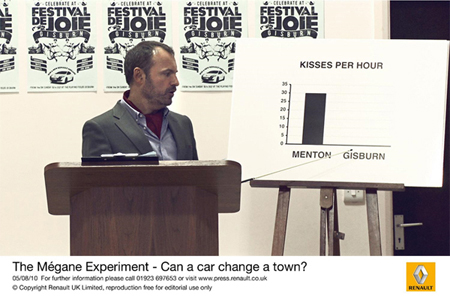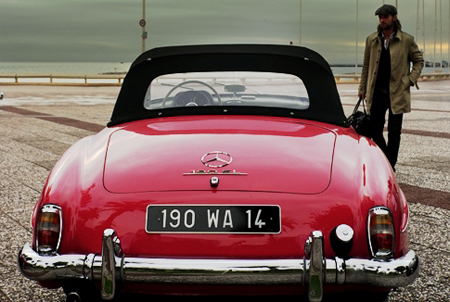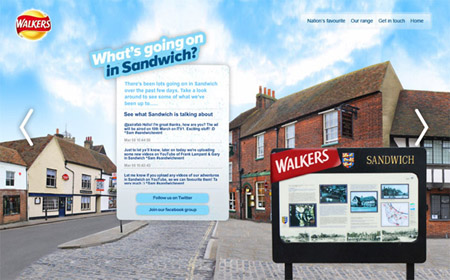A city as a source of the ‘creative spark’. Urban streets as basis for bold and massive campaigns. For many decades, smaller towns and megalopolises have been inspiring advertising agencies behind multiple marketing projects, which on the one hand are targeted at promoting brands and, on the other hand, encourage consumers to compare different cities, unveil creativity and strong dedication to sport, cinema and quests, or even bring rural accents to urban settings. We at Popsop have reviewed global brands’ ad activity during 2010 and first two months of 2011 to see how they’ve been embedding city into their promotions. Now, we are presenting our 3-part study dedicated to the subject. The first section of this review will highlight competitions, cross-city studies, urban sport-related promotions, which have been taking place within big cities around the globe and in a way were dedicated to them.
Brands show respect to all people from all around the globe, but sometimes they express stronger feelings towards their ‘native’ areas. Last year, as part of its ‘Go forth’ campaign Levi’s paid tribute to the city where the brand was founded, San Francisco, by launching a print workshop there. Once the print sessions were over, the cult jeanswear brand launched a similar workshop, the photo one, in New York—both initiatives were kicked off to celebrate creative pioneers. Over a century and a half ago, Levi Strauss came to San Francisco to found an affiliate of his brothers’ NYC dry goods company.
Umbro, sportswear apparel, footwear and equipment brand owned by Nike, continued its Umbro Industries search for creative talents from Greater Manchester, the county where it started. Each quarter, the company gives away £10 000 to support creative energy in the Manchester area.
Though illy is an Italian brand, its AuthentiCity photography contest was not dedicated to Rome, Milan or Turin. Last year, the brand teamed up with the NYC-based School of Visual Arts and encouraged its students or alumni to explore Big Apple and present a set of images which reflect different sides of the big city’s personality.
Subways are built only in big cities, and so the following project dedicated to the underground music can join our list as well. Red Bull, the brand which is best-known for rendering support to extreme sport events, pays tribute to music and art. Last year, the brand brought yet more life and music to one of the world’s hottest and rhythmic cities, São Paulo. The Brazilian city became the heart of the metro music festival Sounderground, where buskers of from New York, Barcelona, Paris, Mexico City, Berlin, Montreal, Moscow, St. Petersburg and London were performing. They entertained the public at various spots around São Paulo, including the Sé Station—the most travelled subway station in the city.
Secret Generated Series presented by Levi’s was another music-related project dedicated to the city environment. In fall 2010, the brand and Urban Outfitters invited the music fans to visit their secret location concerts in Chicago and Boston. But the brands didn’t specified the address—instead, there were photo hints provided, and music lovers had to recognize the top-secret location by the details of venue (a piece of a wall, posters, a fence, etc.).
Cinema is another theme that inspires creators of marketing campaigns for big companies. The world of movies and urban settings are tied together for ever, and some brands including Levi’s, Volvo and Volkswagen have also employed this in their city-inspired projects.
Through its ‘See Film Differently’ campaign, kicked off in fall 2010, Volkswagen invited cinema fans to “enjoy some classic movies in the places where they were filmed” across the United Kingdom.
A very similar campaign, Rolling Roadshow, was launched across the U.S. in summer by Levi’s as part of the above mentioned marketing push ‘Go Forth’—the brand also invited its fans to visit a series of screenings in the cities where the movies were actually been shot.
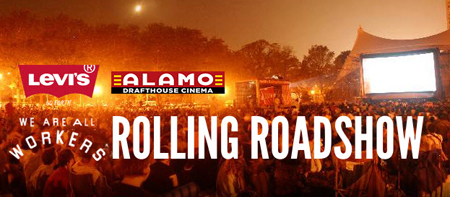
Another car brand, Volvo, invited the fans of good cinematography to revive a lovely tradition of watching movies in drive-in theatres. The auto producer launched the Starlite Urban Drive-In campaign, giving local film lovers a chance to watch some drama comfortably in the open air while sitting in one new Volvos in East London. The $40 ticket provided each participant with a drink and some popcorn, a drivers’ license wasn’t required.
While these brands were inviting its fans to enjoy life through watching another good movie or listening to music, Nike and adidas encouraged its fans to ‘cover’ the city. The brands launched a series of projects, which had active non-professional athletes conquering parts of urban area.
In the ‘Danger Makes Legend’ campaign, adidas offered its fans an opportunity to take over capitals by using well-known football techniques and then challenge a famous footballer, who represented the city, for the overall victory.
In ‘We Are London’ campaign, the same brand wanted its fans to prove they are can call themselves ‘a part’ of the city. For this, they were expected to take a photo of them standing in central London. As far as we know, the campaign was not continued in other capitals.
Nike, which has been promoting urban running with apparel lines, a series of activities and installations in its stores, kicked off Nike Grid Quest last spring and re-launched it in October. The idea of the activity was to run more routes and score more points for a chance to win more prizes from Nike.
The quest theme was also taken up by MINI, which launched a fun ‘Getaway Stockholm’ one-week project that merged offline chase and digital elements. The brand released an iPhone app, which allowed to see where a virtual MINI car was located in the city and ‘grab’ it. Once the ‘car’ was taken, the participant had to run as far as possible from other people, because the virtual auto could be taken by another ‘hunter’. The winner—a person, who was the last to ‘retain’ the virtual car,—was awarded with a real MINI.
Citroën also offered consumers to win an auto from its range. The brand launched digital hide-and-seek game on virtual streets of European cities, and was sending hints to the participants of the contest, which drove them to particular locations were fragments of the DS3 model were hidden. Once all the fragments were picked up, the participants received the clue as to the complete DS3’s location. Those who managed to spot the whole car on the virtual map, got a real auto.
The concept of ‘loosing and finding’ was used by another brand as well (this time, a representative of the confectionery field). M&M’s ‘lost’ its Red character on the streets of Toronto. The brand asked its fans to spot the candy on the virtual map of the city for a chance to receive a prize, which never melts in arms—a smart car.
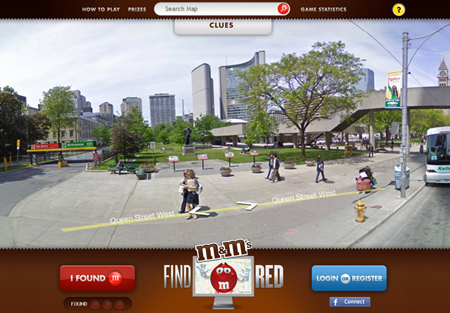
The exploration of cities also became the main theme of the broader Nissan’s campaign, which offered guests of Cardiff, London, Liverpool, Belfast and Glasgow a chance to learn more about the cities in the various areas of its life: music, culture, shopping and entertainment. The project was developed in partnership with the Lonely Planet travel guide and digital media publisher to promote the brand’s Qashqai crossover.
Some brands have also ‘studied’ the cities and then compared them. A few days ago, Jim Beam determined the ‘boldest’ city in the U.S. by conducting a survey and finding out how courageous their residents are. Spokane, WA, is officially the bravest town across the country. The survey supported the recently launched brand’s ‘Bold Choices’ campaign.

In its turn, Volvo decided to determine the ‘naughtiest’ European capital and even released a research paper highlighting reactions of local people to some extraordinary situations, put up by the brand’s team. Paris got on the top of the rating.
From the naughtiest to the happiest. Last summer, Renault’s Mégane was bringing the joy and happiness of one city to another one, located across the sea. The brand commissioned a man name Claude, ‘a French Borate,’ to convince residents of small and boring village of Gisburn, Lancashire to buy Mégane cars. The whole promotion was aimed at helping local people experience ‘joie de vivre’ of one of the most relaxed places in the world, Menton, located on Côte d’Azur.
Mercedes-Benz got into the spotlight with another project, which focuses on travelling and finding something exciting about the cities. Stefan Gbureck, Berlin-based emerging street photographer, embarked on a hitchhiking 17-day journey across Europe, from Munich to Barcelona, in the Mercedes-Benz autos exclusively.
The Walkers crisps brand proved that it can improve towns as well as lunches. A year ago, it launched a splendid campaign centered on a town makeover—the creative team and a roster of celebrities jazzed up a little town Sandwich in Kent, the U.K., and demonstrated that the brand’s crisps can make all sandwiches better, even geographical ones. Today brands are really almighty, aren’t they?
